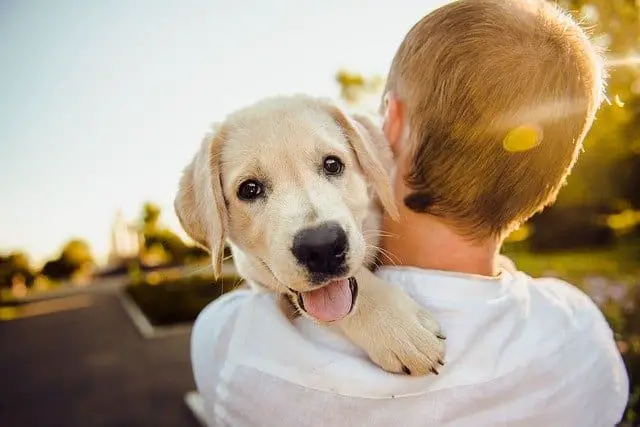Dogs can be just as pessimistic as people, and this negative canine view of life makes them more anxious during their owners’ absences

Is your dog happy? Does your dog see the bowl half full or half empty? If you were to judge your furry companion from fatigue, would you say that your pet has an optimistic or pessimistic outlook on life? Knowing the answers to these questions is important. And, as explained in the following article, scientists have discovered that dogs can be as pessimistic as people, and that these sadder dogs also suffer greater separation anxiety , bark more and have a worse time during absences of their owners.
Is your dog pessimistic or optimistic?
Pessimistic dogs tend to suffer from more separation anxiety, fearing that their owner will not return home
The dogs can be as pessimistic as people. Scientists have confirmed something that dog owners already suspected: some dogs have a more negative view of life than others. In other words (and paraphrasing the famous human saying, adapted to the canine version): there are dogs that see the bowl half full while others perceive it half empty .
The implications of canine pessimism are far from insignificant: a dog that destroys furniture when we are away from home or that barks in a disconsolate way in our absence could be a victim of pessimism. Happy and optimistic people tend to judge ambiguous life situations in a positive way. The same thing happens with dogs: a pessimistic dog suffers more separation anxiety than an optimistic dog.
Is your dog’s bowl half full or half empty?
This unusual look at canine psychology has allowed scientists to understand why some dogs suffer from separation anxiety syndrome so acutely, while others are better able to cope with the hours of solitude when their owners are away from work. the House.
Dogs that remain calm tend to see the bowl as half full (they are more optimistic), while those that bark and destroy furniture see the bowl as half empty : that is, their outlook on life is more negative.
Is your dog happy or sad? Find out below
How to discover if the dog with whom we share life is pessimistic or, on the contrary, has a more positive vision of life?
The researchers observed the behaviour of 24 dogs while they were alone in a room. Some of them barked insistently or scratched at the door in stress. After a while, they placed two bowls in the same room: one was empty, while the other contained food.
The dogs were trained to understand that the food bowl could be full or empty. After putting the dishes in random locations, what differentiated some dogs from others? While some did not hesitate to run to find their bowl of food ( optimistic dogs ), the rest (pessimists) did not show as much confidence in finding the full bowl and, consequently, expressed less interest in chasing the plate. His most negative version of life (that is, his perception that the plate would be empty) won out.
But what practical repercussions does this research have on the dogs with whom we share life? The importance lies in understanding the relationship that exists between these different views ( pessimistic , optimistic) and the risk that the animal suffers from separation anxiety syndrome, as well as other psychological problems derived from its lack of confidence. The dogs most stressed during the absence of their owners turn out to be the most pessimistic dogs. The fear that their dear two-legged friends will not come home (the half-empty bowl) is greater than in the case of the most optimistic.
Separation anxiety in dogs: tips

- Dogs suffering from separation anxiety during the absence of their human family need help. A canine educator as well as your veterinarian will serve as a guide on this path.
- Learn to detect separation anxiety in the dog : the dog barks inconsolably during the absence of its owner, performs its needs at home and can even destroy furniture.
- Some keys help to reduce the stress of the dog during the absence : teach the dog that taking the keys does not always mean leaving the house, start with shorter trips (and increase them gradually), avoid the dog’s boredom and respect their schedules. food and walks.
- The National Association of Animal Friends also recommends ignoring the dog during the 20 minutes before leaving the house , as well as avoiding phrases such as “I’ll be back soon” and “behave yourself”, which can further increase separation anxiety. a dog.
